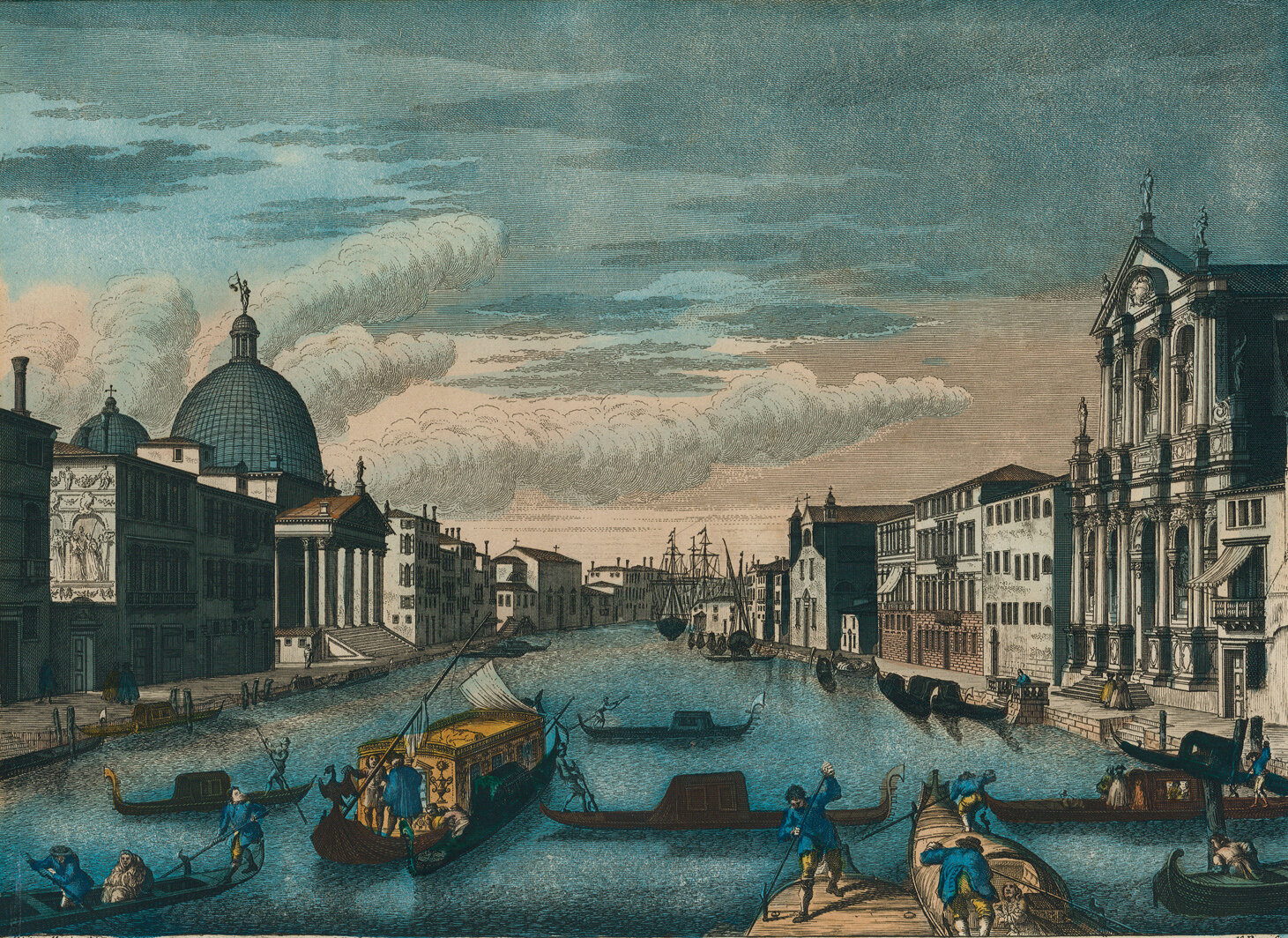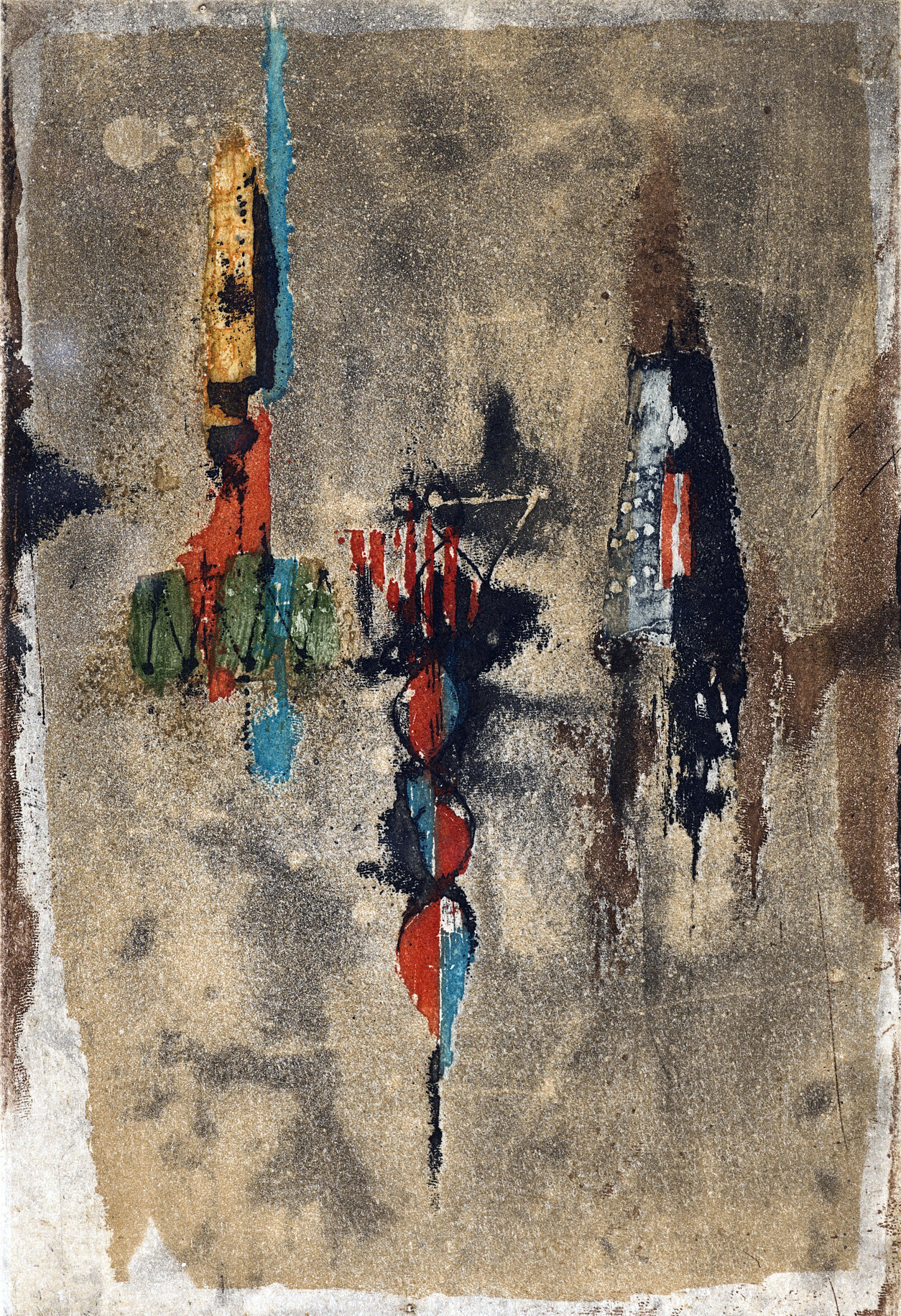Richard Parr (1707-1754), after Michele Marieschi (1710-1743), A View on the Grand Canal of Venice, Hand-colored engraving, c. 1750, The Noble Maritime Collection, Gift of Barnett Shepherd
Engraving
The metal engraver cuts into a plate with a sharp burin, a tool which rests in the palm of his hand which he pushes into the plate. The engraver turns the plate as he cuts away metal to create the incised lines and line patterns. Copper, being malleable, is easier to cut, but artists often use steel plates for large editions because it more durable and can endure thousands of impressions before it begins to show wear. The engraver must have remarkable strength and steadiness to create clear and even engraved lines, especially when building-up cross-hatched tonal areas.
To proof the plate, the artist spreads ink into the incised lines and wipes the excess ink away. He places the plate on the press bed, lays a sheet of dampened paper on top, and runs them through the press. The force of the press pushes the paper into the ink-filled cuts, and this becomes the engraving.
Johnny Friedlaender (1912-1992), Untitled, Aquatint, A.P., c. 1960, The Noble Maritime Collection, Gift of Barnett Shepherd
Aquatint
An aquatint is an intaglio technique that creates tonal areas with acid biting and a particle-resistant method. The artist dusts the clean plate with finely ground rosin which is carefully heat fused to the surface with a torch or hotplate. Then, when the artist immerses the plate in a gentle acid bath, the acid bites into the metal around each rosin speck, pitting the surface.
Timing is important to an aquatint. Less time in the acid bites a shallow area, which holds less ink and prints lighter. Longer time in the acid bites deeper into the plate, allowing it to hold more ink and print darker. To create a range of values the artist can control exposure time by blocking out lighter areas by painting on a resist, which is applied to protect a particular area on the plate, and allow remaining areas to be bit deeper. When complete, the artist cleans off the rosin, inks and gently wipes the plate allowing the finely pitted aquatint surface to hold the varying tones of ink.


